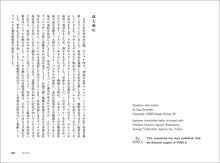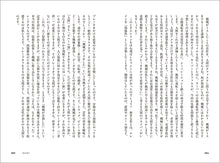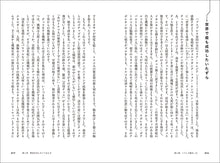
Author: Inga Strumke / Translated by: Yukari Hane / Supervised by: Satoshi Kobayashi
Recommended by Yutaka Matsuo (Professor at the University of Tokyo Graduate School)!
Winner of the Brague Prize for non-fiction.
A science fiction book from Norway has arrived, providing an easy-to-understand explanation of the history, present, and future prospects of AI (artificial intelligence).
The book is divided into three parts. The first is the history of artificial intelligence. The second part is the current state of the art in artificial intelligence, and an ethical and evolutionary consideration of what will happen if humans leave problem solving and decision-making up to machines. Finally, the book discusses issues of creativity, consciousness, and the future of artificial intelligence. Each part is full of concrete anecdotes, and the humorous tone and well-paced explanations are excellent, making it easy to read even for readers who are not familiar with artificial intelligence.
The first part of the history begins with the 18th century "chess-playing Turkish dolls," followed by Alan Turing, DeepBlue, supervised and unsupervised learning, neural networks, ChatGPT, and more. A super-intelligent cleaning robot appears in the loss function design problem. A robot that works hard to clean the house may one day realize that you are the source of the dirt, and the optimal solution is to eliminate you.
The anecdote in Part 2 on the current state of artificial intelligence is about a digital billboard at a pizza chain near Oslo Central Station. Not only did it display pictures of food from the menu one after another, but it also used a hidden camera to observe the expressions of people looking at it. Meanwhile, Tesla cars use cameras to capture the surroundings. From these two examples, the author argues that we should think of "collecting data" and "the purpose of using data" separately. Drawing on various examples, he explains the current state and problems of artificial intelligence.
Part 3 is about the ethics of AI. The conclusion is that regulation is necessary, but the process is neither easy nor simple. There are opinions that if we leave decision-making to machines, human decision-making ability will decline, but this is a universal thing in evolutionary theory. What is the purpose of collecting data, and how do we obtain consent? The public, AI engineers, and politicians have different views on artificial intelligence. We also discuss the development of laws regarding artificial intelligence that are progressing in the EU.
Recommended by Yutaka Matsuo (Professor at the University of Tokyo Graduate School)!
Winner of the Brague Prize for non-fiction.
A science fiction book from Norway has arrived, providing an easy-to-understand explanation of the history, present, and future prospects of AI (artificial intelligence).
The book is divided into three parts. The first is the history of artificial intelligence. The second part is the current state of the art in artificial intelligence, and an ethical and evolutionary consideration of what will happen if humans leave problem solving and decision-making up to machines. Finally, the book discusses issues of creativity, consciousness, and the future of artificial intelligence. Each part is full of concrete anecdotes, and the humorous tone and well-paced explanations are excellent, making it easy to read even for readers who are not familiar with artificial intelligence.
The first part of the history begins with the 18th century "chess-playing Turkish dolls," followed by Alan Turing, DeepBlue, supervised and unsupervised learning, neural networks, ChatGPT, and more. A super-intelligent cleaning robot appears in the loss function design problem. A robot that works hard to clean the house may one day realize that you are the source of the dirt, and the optimal solution is to eliminate you.
The anecdote in Part 2 on the current state of artificial intelligence is about a digital billboard at a pizza chain near Oslo Central Station. Not only did it display pictures of food from the menu one after another, but it also used a hidden camera to observe the expressions of people looking at it. Meanwhile, Tesla cars use cameras to capture the surroundings. From these two examples, the author argues that we should think of "collecting data" and "the purpose of using data" separately. Drawing on various examples, he explains the current state and problems of artificial intelligence.
Part 3 is about the ethics of AI. The conclusion is that regulation is necessary, but the process is neither easy nor simple. There are opinions that if we leave decision-making to machines, human decision-making ability will decline, but this is a universal thing in evolutionary theory. What is the purpose of collecting data, and how do we obtain consent? The public, AI engineers, and politicians have different views on artificial intelligence. We also discuss the development of laws regarding artificial intelligence that are progressing in the EU.
Released on 25/06/11
▼Click here for details about the book▼
Thinking Machines | Seibundo Shinkosha Co., Ltd. (seibundo-shinkosha.net)









